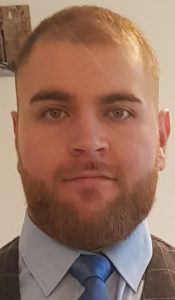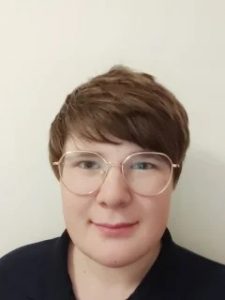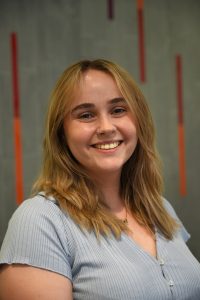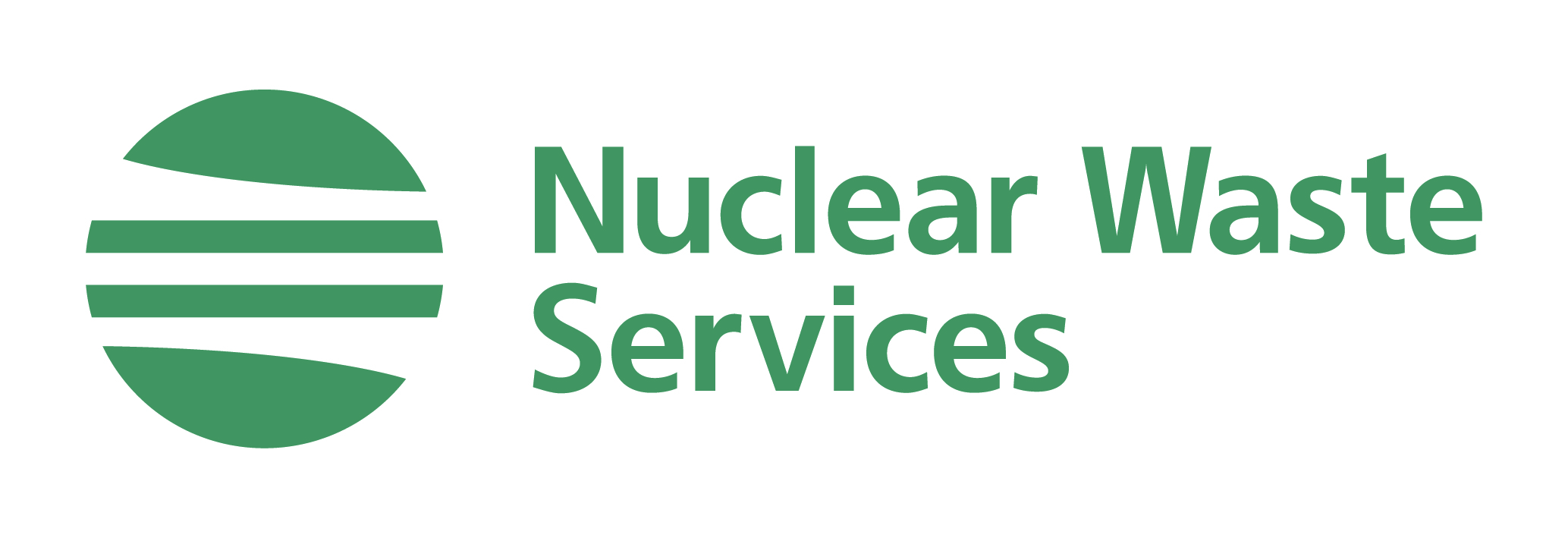Researcher profiles
The Nuclear Waste Services Research Support Office works with PhD students at all stages of their research.
Below, you can find out more from some of the current NWS sponsored students.
Ismail Aldean
Ismail is in the first year of his PhD project titled ‘The long-term evolution of candidate plutonium wasteforms’ at the University of Sheffield.
Ismail Q&A
What is your PhD project about?
Plutonium, a radioactive element, is produced in nuclear reactors as one of the by-products of nuclear energy. The UK now has a 120 tonne stockpile of plutonium. The current plan for this stockpile is to reuse the majority as a special type of nuclear fuel called “mixed oxide” or “MOX” fuel, while the remainder will be disposed of underground in a geological disposal facility.
Before radioactive plutonium can be disposed of, it must first be conditioned into a safe and stable form, called a wasteform, which is then placed inside several outer packages before being disposed deep underground and backfilled. The wasteform can be made by incorporating the plutonium into another material, with ceramics being the best option at present. Because plutonium will be radioactive for over 100,000 years the material we choose must be stable for very long periods of time, especially in terms of how it interacts with groundwater which it may eventually come into contact with if the outer barriers are penetrated.
The purpose of my PhD project is to understand how these materials change over time once they come into contact with groundwater and how well they can keep hold of the radioactive plutonium.
Why did you choose your PhD discipline?
Since halfway through my chemistry undergrad, I’ve been fascinated by nuclear science. Very strange things happen on atomic scales! I wanted to use this interest in a way that could help advance science and society, so nuclear energy was the obvious option.
Why did you choose your institution?
The Immobilisation Science Laboratory at Sheffield is a known hub for nuclear science in the UK and is very well-equipped for nuclear research. It has strong connections in the nuclear community and opens doors for plenty of interesting collaborative research.
How will your PhD contribute to the safety case for a UK GDF?
One of the main concerns people have with building a GDF and disposing of plutonium underground is whether it is safe. Demonstrating that the wasteforms proposed for plutonium disposal can remain stable and retain plutonium for geological timescales is an important part in both building a safety case and reassuring the public that the strategy is safe.
What has been the best thing about the project so far?
As a CDT student, I’ve had a chance to learn about all aspects of nuclear energy, even beyond the scope of waste disposal. Having this multidisciplinary learning has been very interesting and useful!
What has been the most challenging thing about the project so far?
Condensing information into concise reports/reviews. It can be difficult to convey a message in the shortest way possible.
What do you wish you’d known before starting this project?
The major importance of reading in a PhD! I feel I am a slow reader when it comes to scientific papers, a skill which I am now developing but would have been useful to build up before starting.
What are your plans after your PhD?
At this stage it’s too early to tell but there are a few good options. Continuing research in academia, moving to industry or working in government on nuclear policy.
What have been the benefits of NWS sponsorship for the project?
I am very grateful to NWS for funding my PhD which is part of a larger NWS project investigating plutonium evolution to help build a safety case for its disposal. This is very interesting because it means having the freedom of an ordinary PhD in terms of the depth and level of detail we can explore, but still being industrially relevant and knowing the outcomes will be useful in contributing to the development of the GDF.
What advice can you offer to future NWS PhD students?
Don’t be afraid to take some good time at the start of your PhD to read very deeply into the literature. Being familiar with the key research before you start will help you understand where the knowledge gaps are and how your research can contribute.
We look forward to sharing more about Ismail’s research progress in the future.
Rosie Smart
Rosie is in the first year of her PhD project titled ‘An investigation of metallic uranium corrosion in a geological disposal facility (GDF) setting’ at the University of Bristol.
Rosie Q&A
What is your PhD project about?
Despite the very first generation of commercial nuclear power reactors now being retired, we still need to dispose of the inventory of the spent nuclear fuel. For decades spent fuel has been held in interim storage facilities, requiring frequent maintenance and monitoring. Much of this nuclear waste will remain radioactive for thousands of years. It is therefore naive and arguably unethical to rely on future generations to carry the burden of continuing to store this waste safety and effectively.
In England and Wales the accepted solution is to construct a geological disposal facility deep underground. Such a facility will aim to isolate nuclear waste for hundreds of thousands of years, by which time the radioactive waste will have decayed to safe background levels of radioactivity.
My PhD aims to investigate how uranium, used in nuclear fuel, would corrode and behave over thousands of years and under the evolving conditions of a geological disposal facility, for example in different types of groundwater and oxygen concentration. Uranium corrosion is important to investigate to ensure the safety of a disposal facility, both in the short- and long-term. We need to be confident that radioactive uranium corrosion products do not seep into the groundwater and escape the facility, and that toxic corrosion products do not form in a way in which endangers the safety of the facility.
Why did you choose your PhD discipline?
I am a firm believer that nuclear power is vital for achieving net zero in the UK by 2050. However, I also believe that the nuclear waste problem is one of the biggest hurdles to overcome and this tarnishes the reputation of the nuclear industry.
Why did you choose your institution?
I recently completed a MSc at Bristol where I was introduced to academics in the nuclear field and the great scene of community. Bristol has a lot of active research in my field and there are countless nuclear sector industries on their doorstep.
How will your PhD contribute to the safety case for a UK GDF?
Metallic uranium readily reacts with many species. There has been extensive research into how uranium reacts with oxygen and water, and the formation of uranium hydride, but there is limited research on specifically how uranium is likely to corrode in evolving GDF conditions. For example, we need to predict the rate of uranium hydride formation because it is highly toxic and pyrophoric, meaning it can spontaneously catch fire in the presence of oxygen. This could pose a significant hazard, especially in the pre-closure phase where staff could be in relatively close proximity to the waste; particularly important for the short-term safety of the GDF.
We also need to understand how pond water evolves into GDF groundwater as it interacts with the waste and waste containment. We must then investigate how the pH and chemical constituents of this groundwater could interact with the uranium, for example in leaching studies. Groundwater is one of the main mechanisms by which radioactive isotopes could escape a GDF, and so it is important for the long-term safety of a GDF that leaching of uranium into the groundwater is limited.
What is the most interesting finding from your project?
I am only at the start of my PhD and because of COVID I haven’t yet been able to conduct any research in the labs. However, I have been doing a lot of reading and learning about how a GDF is likely to evolve over time and uranium corrosion in water and uranium hydride formation. I am now writing a literature review to encapsulate all previous research in GDF conditions and relevant uranium science.
What has been the best thing about the project so far?
The best thing about my research is how important it is and therefore how motivated I feel. This research is a crucial part to the ultimate disposal of nuclear waste.
What has been the most challenging thing about the project so far?
The most challenging part so far has been learning how to use a computer modelling program called GEANT4. This has been a very steep learning curve and I still have a long way to go. However, the lack of resources online means that it is even more satisfying when it works!
What do you wish you’d known before starting this project?
I wish I had known that progress can often feel slow because each task is often a lot of work! I wish I had been more realistic when setting personal goals and deadlines.
What are your plans after your PhD?
I currently plan to leave academia and work as a waste behaviour expert either as part of a consultancy or somewhere, like Radioactive Waste Management, which is heavily involved in the management/disposal of nuclear waste.
What have been the benefits of NWS sponsorship for the project?
NWS are at the front-line of making a GDF a reality in the UK. They have already published many reports on topics such as the evolution of spent nuclear fuel, particularly for oxide fuels, and waste packages, which have proved invaluable to my reading of literature so far. They have also been a very useful, relevant and easily understandable reference for everything you could want to know about hosting a GDF in the UK.
What has been the most surprising thing to come out of your PhD?
I am always surprised by what I didn’t know there was to know. Over this year I have become more familiar with the Dunning–Kruger effect, especially when it comes to uranium science. Basically, there is so much more to know than I ever thought possible, and the way to manage this is to identify what you need to know and what exactly is relevant to your research.
What advice can you offer to future NWS PhD students?
Make sure you can convince yourself why your research project is important to society. By understanding how your research will contribute to a better world, this will keep you more motivated and give your life enhanced meaning.
You can find out more about Rosie’s research on her university page. We look forward to sharing the outcomes of Rosie’s research in the future.
Charlotte Nevin
Charlotte (known as Charley) is in the fourth year as Affilliate of her PhD project titled ‘Resolving reaction mechanisms, kinetics, and mass transport in radionuclide-loaded geopolymer cement wasteforms’ at the University of Sheffield.
Charlotte Q&A
Describe your research in a nutshell:
Assessing the viability and mass transport mechanisms of geopolymer cements as an alternative disposal technology for cationic radioactive waste, especially in repository-relevant conditions.
What do you love about your research?
I love that it is so multi-faceted – in one day I can go from lab work, to processing data at my desk, and even to chasing down someone to ask them to help me fix my code!
What do you think is your most significant contribution to the GDF Programme to date?
I have provided insights into how geopolymers will perform in repository-relevant conditions (high temperatures, under irradiation, etc.) which will give an indication of their long-term viability as a wasteform. This will all go into underpinning the safety case in the future!
How has the RSO community helped you / how would you like it to help?
Having such a wide-reaching and wide-spread community who will always offer you a hand if you are stuck is one of the most valuable parts of my PhD. I have always felt very supported!
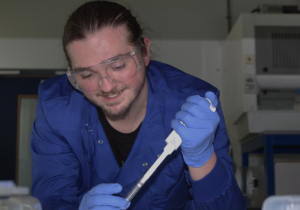
Latham Haigh
Latham is in the third year of his PhD Plutonium Contract at the University of Sheffield.
Latham Q&A
Describe your research in a nutshell:
I investigate how ceramic materials for Pu immobilisation are affected by radiation, from their structure, to how radiation affects their durability!
What do you love about your research?
I am always amazed at the diversity of research that goes in the radioactive waste disposal community, from every layer of the GDF underground to social and political impacts of the programme above ground!
What do you think is your most significant contribution to the GDF Programme to date?
My research is still ongoing (watch this space!) but I love working in public engagement activities to help show people what the GDF programme is all about and the importance of safe disposal of radioactive wastes.
How has the RSO community helped you / how would you like it to help?
Through the RSO I have been able to meet so many fantastic people who have not only given me fantastic pointers in my research, but also helped me understand how my work fits into the wider context of the GDF programme and what we need to find out to make it happen.
If the GDF were a superhero, which one would it be?
I’d have to say The Thing from the Fantastic Four! Rocky, strong and super durable!

Olatundun Aihie
Olatundun is in the second year of a PhD at the University of Plymouth.
Olatundun Q&A
Name
Olatundun Aihie
Role/Institution
2nd Year PhD student and the University of Plymouth
Title of your PhD
Excavation Disturbance Zone Evolution in UK Jurassic and Triassic Mudrocks – Implications on fluid flow in a nuclear waste repository.
What has been your involvement with NWS/RSO?
As a NWS-funded PhD student, I have engaged with the RSO from the start of my project. Through NWS-RSO-organised conferences, I have connected with fellow researchers, industry partners and members of the communities interested in being informed by our research from a broad range of perspectives. This has also provided routes to disseminate interim results and showcase my research to the wider UK research community.
Describe your research in a nutshell!
The UK’s Geological Disposal Facility (GDF) is a planned environmental infrastructure comprising a multibarrier system, natural and engineered, to dispose of higher-level nuclear waste. My research explores the strain evolution of the natural barrier, in this case the Jurassic and Triassic mudrocks, caused by excavation-induced stress redistribution from construction through post-closure activities, and how this alters rock properties and impacts fluid flow within the GDF.
To do this, I am using experimental methods to investigate and characterise the microstructural features of intact and deformed mudrock samples, mapping large-scale deformation using drone survey to track possible strain evolution, establish fracture propagation and network over a period of time.
The expected outcome is a conceptual model of the excavation damaged zone (EDZ) which aims to predict the spatial and temporal evolution of the EDZ and its impact on fluid migration in a GDF.
In essence, this work aims to understand and predict how potential GDF host-rock properties evolve around excavation activities, ensuring robust isolation and containment of nuclear waste over the facility’s lifetime.
How was your experience of working with The Brilliant Club? What is it, how did you get involved, and what did you get up to?
This opportunity arose directly from the NWS-RSO’s efforts to keep researchers informed of training and engagement events. The Office had emailed about working with The Brilliant Club and I took it as a chance both to train in effective science communication and to deepen my own understanding of my research topic.
My experience with The Brilliant Club has been most rewarding. It has been invaluable in developing my communication skills, improving my grasp of the geological disposal facility (GDF) and building confidence in engaging non-expert audiences. At the moment, I have completed 4 placements with the organisation and gained enormous experience in innovative teaching skills and time management.
The process involved completing the mandatory Researcher Development Programme modules on Safeguarding and Data Protection, designing a Scholars Programme course handbook, and attending a live training day covering core pedagogy, encouragement techniques and an elective.
Building on The Brilliant Club’s handbook-design training, I designed “The Vault of Safety – Understanding the Geological Disposal Facility” handbook for Years 9 and 10 students.
Over the term, I taught four tutorials on why the GDF is needed, the role of host rock in the multibarrier system, addressing safety concerns around the GDF and the contributions of Underground Research Laboratories (URLs) to studies on the GDF.
The role also required setting and marking baseline and final assignments, and most importantly, supporting the students throughout the programme to build their confidence to apply to prestigious universities via a university-style course.
As a first-generation graduate, I know that the stages of my academic journey in which I excelled were those in which tutors believed in me and offered their fullest support. Their support and encouragement inspired me to strive to be the best version of myself, and I am now paying that support forward through my work with The Brilliant Club.
Do you have a highlight you would like to share from the experience?
It is always surreal to read the final assignments and see how some scholars have grasped the complex concepts of the GDF and can present evidence-based arguments. One student’s work stood out so much that I mentioned it to the lead teacher. I learned that, like me, his parents do not have a university degree and that few people expected him to consider higher education.
During a feedback session, I asked what he found most interesting. He mentioned the Underground Research Laboratories and their contributions to advancing since around the GDF. When I asked if he was thinking about university, he replied that he preferred hands-on, technical learning. I told him that I am also a hands-on, skills-based enthusiast and that I work in laboratories helping with the setup and sometimes build things from the scratch. I explained that universities offer similar practical courses where you can pursue your passion. He said he would look into engineering courses. That response was very gratifying, and I hope I have encouraged him to pursue his interests in a setting that offers endless possibilities.
Also, drawing on my experience with The Brilliant Club, I applied for a placement with Nuclear Waste Services and was delighted to secure it. This opportunity has been one of the most rewarding aspects of my doctoral journey, allowing me to interact with experts and professionals in the field, gain insight into how they communicate their work to the communities they engage with, and learn which tools they use, knowledge I can incorporate into my own science communication skills.
How did you find doing this alongside your PhD work?
Balancing the tutoring placement with my PhD required careful planning and prioritisation. I set aside specific evenings each week for tutorial preparation and marking, while reserving core working hours for my research. Clear communication with my supervisor helped to accommodate my placement commitments.
Although it added to my workload, the experience complemented my doctoral studies. Explaining complex concepts to school pupils clarified my own understanding and improved my ability to articulate my research during presentations. Time spent on outreach felt productive rather than burdensome, and the skills I gained especially in structuring material and managing small-group sessions have since benefited my own research and my role as teaching support assistant. Overall, I found the additional responsibility challenging but highly rewarding.
What would you say to others considering working with the Brilliant Club?
Go for it! The training you receive will sharpen your communication and teaching skills, and designing tutorials helps you clarify your own research. You will gain confidence presenting complex ideas and learn to adapt to different audiences. It is also a chance to give back by inspiring pupils who might not otherwise consider university. Moreover, it provides a welcome break from the routine activities of a PhD. If you want to develop professional skills in public engagement and make a real difference in school outreach, working with The Brilliant Club is well worth your time.
Bonus question: What do you love about your research? 
I have always wanted to do research because I love solving problems. My PhD gives me the opportunity to take a question right from the start, work out how to tackle it and design the framework that points towards a solution. It’s like watching a child grow from conception to adulthood, and I find that process utterly compelling.
I absolutely love working in the laboratory, especially examining rocks under the microscope. There are moments when I peer down at an ordinary hand specimen, see nothing remarkable with the naked eye, then place it under the microscope and I am met with a barrage of intricate features. I would often find myself exclaiming, “Absolutely mind-blowing!”. That thrill of discovery is exactly what I live for in my research.
Future Plans?
I would like to show the students how some of the experiments are conducted, giving them a real-life experience of how my research feeds into the broader aims of the GDF.
The Brilliant Club
Spaces to take part in the Autumn term are now available; head to the Brilliant Club to enquire now: https://thebrilliantclub.org/about/
Contact us
We welcome opportunities to connect with the research community, industry and the general public.

